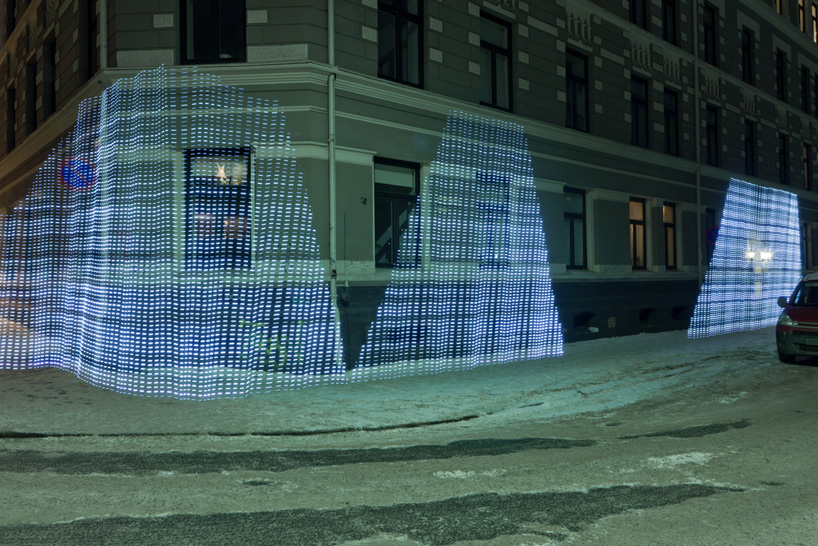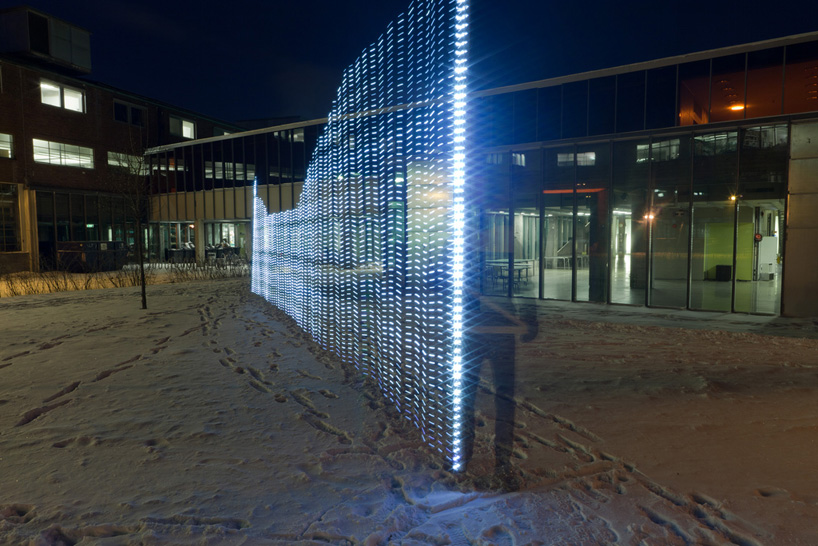It’s really convenient to have your own WiFi network which connects all WiFi-enabled gadgets. Routers are very cheap, as well as high speed broadband network access, thus a modern city is usually filled with hundreds of networks – of various signal strengths and various ranges. Three Scandinavian guys came out with an idea to visualize that contemporary phenomenon.

Timo Arnall, Jørn Knutsen and Einar Sneve Martinussen built a rod of flashing lights, which works as a device to measure WiFi signal strength. I have seen many WiFi-measuring gadgets, like, for instance, very cool T-Shirts, but none of them was used with such a huge breadth.
The rod is 4 m tall and has 80 LEDs running through its length (the more LEDs flashing, the stronger is the signal). Despite the fact that it looks like a fence on the video, actually it’s just the single rod. The amazing effect was achieved through long-exposure photography and a few weeks of walking, measuring and photographing a part of Oslo, the capital of Norway, in December 2010. The project is called “Immaterials: light painting WiFi“.
The below video clearly shows the urban landscape of networks, the relationship between WiFi and the physical environment, and how the signal strength in private homes differs from banks and offices. What is more, it definitely demonstrates the fact that WiFi is virtually everywhere. The networked city is messy, informal and seamful, and will always be a part of the complex context of city life, the artists say. “Immaterials: light painting WiFi“ is actually a part of Martinussen’s PhD project on design, technology and city life. He will also discuss this matter in his forthcoming book.
Sometimes we adopt the newest technologies very quickly and assume they are obvious, but it should not be omitted that every technology influences our lives in some way, even if invisible.
Looking for more cool wi-fi mods and gadgets? Check out the Wifi signal boosting antenna, how to make your own wireless signal and the world’s first GPS wi-fi router.
Via: yourban.no











